I visited some of the Chelsea galleries last weekend of April with my friend Brett, who was visiting from San Francisco. As usual there were mostly disappointments, but also a few interesting exhibitions. I thought Kenneth Noland‘s show at Mitchell-Innes & Nash was very well-curated and well-exhibited. Mel Kendrick had two interesting and solid exhibitions at David Nolan and Mary Boone. Neil Farber‘s paintings at Edward Thorp Gallery were humorous and diverting, and one of my favorite show of the day. Julia Jacquette‘s paintings at Anna Kustera were bit of let down for me. I was expecting great sensual paintings from the exhibition photos. To me, unfortunately these paintings looked better as reproduction images.
1970s pioneering feminist artist Joan Semmel is showing some of her signature nude paintings at Alexander Gray Associates. Semmel, who is in her 80s, still looks amazing, and the paintings convey the sensualness of the nude paintings with soft focus brush works. At the same time, these newer nudes lacked the power of her earlier “viewed-from-female-body-perspective” paintings of entangled male and female nudes as well as artist’s own self-portraits. Yet it is always gratifying to see her work, which has been and still is a big influence on my own work.
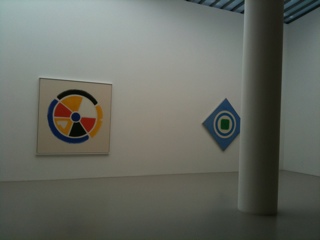
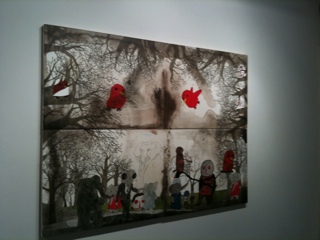
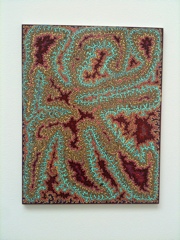
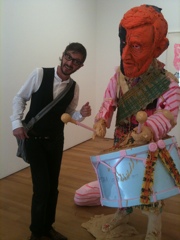
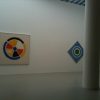
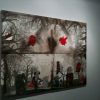
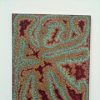

 Kira Nam Greene’s work explores female sexuality, desire and control through figure and food still-life paintings, surrounded by complex patterns. Imbuing the feminist legacies of Pattern and Decoration Movement with transnational, multicultural motifs, Greene creates colorful paintings that are unique combinations of realism and abstraction, employing diverse media such as oil, acrylic, gouache, watercolor and colored pencil. Combining Pop Art tropes and transnationalism, she also examines the politics of food through the depiction of brand name food products, or junk food. Recently, Greene started a figurative painting series spurred by the 2016 Presidential Election, Women’s March, #metoo movement and ensuing crisis of conscience, this new body of work aspires to present the power of collective action by women.
Kira Nam Greene’s work explores female sexuality, desire and control through figure and food still-life paintings, surrounded by complex patterns. Imbuing the feminist legacies of Pattern and Decoration Movement with transnational, multicultural motifs, Greene creates colorful paintings that are unique combinations of realism and abstraction, employing diverse media such as oil, acrylic, gouache, watercolor and colored pencil. Combining Pop Art tropes and transnationalism, she also examines the politics of food through the depiction of brand name food products, or junk food. Recently, Greene started a figurative painting series spurred by the 2016 Presidential Election, Women’s March, #metoo movement and ensuing crisis of conscience, this new body of work aspires to present the power of collective action by women.